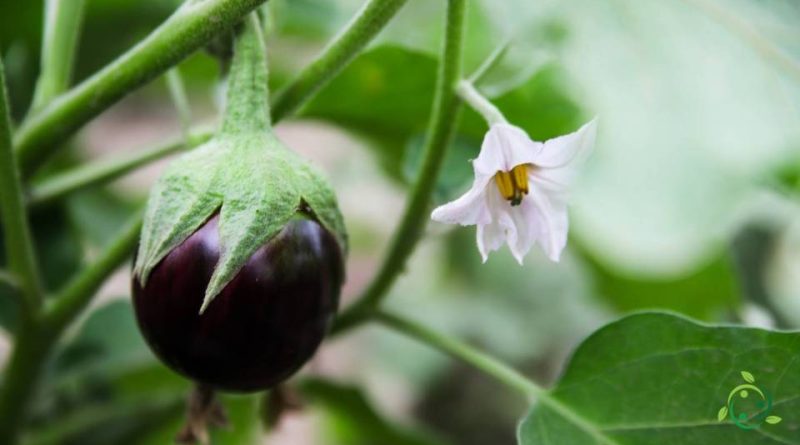Nutritional value of the Aubergine
Nutritional value of the Aubergine
Eggplant or aubergine (Solanum melongena L.) is a plant of the Solanaceae family, cultivated for its edible fruit.
This species is the result of the domestication of wild species of Solanum incanum (Solanum incanum L., 1753), through repeated hybridizations with the related Solanum campylacanthum Hochst., Probably with two independent paths: one in South Asia and one in East Asia and with subsequent wildings and new domestications.
Features –
The eggplant is a herbaceous plant, erect, from 30 cm to just over a meter high.
It has large, solitary, purplish or even white flowers.
The fruits are large, elongated or round berries, usually black, edible after cooking.
Among the cultivated varieties are mentioned:
– the long Violet from Palermo, with dark purple elongated fruit;
– the long violet of the farms with violet fruit;
– the early dwarf violet with small fruit;
– the Murcia aubergine with thorny leaves and stem, violet fruit, round;
– the Monstrous of New York with enormous violet fruit;
– the Tonda comune di Firenze, with pale violet fruit, hybrid, with few seeds, tender and compact pulp.
– the Red Aubergine DOP from Rotonda, with a shape similar to a tomato, red-orange color, fruity pulp and a slightly spicy flavor, belongs to another species.
– the white aubergine which has fruits of an unusual white color and of more than moderate size. This eggplant is rich in antioxidants and probably comes from the Anatolian peninsula.
There is also a white eggplant variety with thorns and a white eggplant variety with pink undertones. This variety also has few seeds.
Nutritional factsheet –
Eggplant is a vegetable that is mainly consumed cooked.
In 100 grams of eggplant there is an intake of about 20 calories, divided as follows: 55% carbohydrates, 25% proteins and 20% lipids.
The same quantity also contains, on average:
– 92.30 g of water;
– 1 g of protein;
– 0.19 g of lipids;
– 5.7 g of carbohydrates;
– 3.4 g of fiber;
– 0,649 mg of vitamin B3 (niacin);
– 2.2 mg of vitamin C;
– 0.281 mg of vitamin B5 (pantothenic acid);
– 0.084 mg of pyridoxine;
– 0.039 mg of vitamin B1 (thiamine);
– 0.037 mg of vitamin B2 (riboflavin);
– 0.30 mg of vitamin E;
– 27 IU of vitamin A;
– 22 µg of folate;
– 3.5 µg of vitamin K;
– 230 mg of potassium;
– 14 mg of magnesium;
– 9 mg of calcium;
– 2 mg of sodium;
– 0.250 mg of manganese;
– 0.24 mg of iron;
– 0.16 mg of zinc;
– 0.082 mg of copper.
It is also a source of anthocyanins.
Property –
Raw aubergine has a bitter taste that is diluted with cooking, which also makes the vegetable more digestible and enhances its flavor. On the other hand, aubergine has the property of absorbing dietary fats, including oil, very well, allowing the preparation of very rich and tasty dishes. For these reasons the aubergine is preferably consumed cooked. Normal cooking is not able to completely eliminate solanine, which degrades completely at much higher temperatures (around 243 ° C); however, this is not a problem, because in aubergines the content of solanine (α-solanine, solasonine and solamargine) is equal to 9-13 mg / 100 g of fresh weight, well below the quantity considered acceptable for vegetables (20 –25 mg / 100 g of fresh weight).
Furthermore, the soluble fibers present in eggplants help to keep the cholesterol level in the blood under control. Antioxidants and vitamins of group B bring benefits to the functioning of the metabolism, potassium is an ally of heart health and in the skin there are many anti-tumor, anti-aging, anti-inflammatory and protective molecules against neurodegenerative diseases (specifically, anthocyanins)
Among the contraindications it should be remembered that, as mentioned, solanine is contained in aubergines, a compound that is dangerous to health but which does not seem to trigger toxic effects following food use, especially cooked, of this vegetable.
Furthermore, there are no interactions between the consumption of aubergines and the intake of drugs or other substances. In case of doubt, however, it is advisable to ask your doctor for advice.

